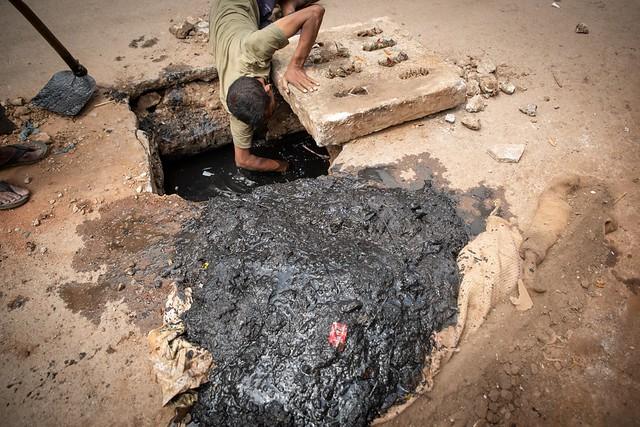
Health inequities are significantly driven by social processes such as stigma, prejudice, discrimination, social exclusion, and marginalization. Yet, until the first half of the 20th century, these processes were rarely considered while explaining differences in health outcomes. The second half of the twentieth century saw the emergence of an understanding of social determinants of health. Many studies have established that marginalized groups experienced worse health outcomes. But how exactly social determinants translate into biological vulnerability and poor health needs deeper elucidation. To explain this, we need to answer another question: “Who and what drives the current and changing patterns of social inequalities in health?”. We attempt to use this question in decoding health inequities among three diverse marginalized groups in India by drawing upon eco-social theory as laid out in a seminal paper by Nancy Krieger.
Embodiment, caste and health
The prevalent theories of the 20th century, such as the psychosocial theory or the political economy of health perspective, acknowledge the role of social factors in producing disproportionate health outcomes in certain social groups. They fail, however, to chart the exact causal connections between the larger socio-political and economic phenomena and the biological mechanisms producing health inequalities. In 2001, Nancy Krieger proposed a way out in her seminal work on Eco-social theory and embodiment (PS: she coined the term ‘ecosocial theory’ in 1994).
In the words of Krieger, Embodiment is “a concept referring to how we literally incorporate, biologically, the material and social world in which we live, from conception to death; a corollary is that no aspect of our biology can be understood absent knowledge of history and individual and societal ways of living”. This concept has been extensively used to explain how racism produces ill health among African Americans, Hispanics, and others.
In India, caste is one of the longest-surviving social hierarchies deeply embedded in unequal power relations. Although the extant literature highlights caste as a correlate of health outcomes, the underlying mechanisms through which casteism produces health inequities are yet to be decoded. We both work in the area of occupational health and have used three diverse experiences of specific marginalized groups to demonstrate how multiple disadvantages, including caste, class, and gender, often intersect to create context-specific pathways of embodiment.
The case of Dalit women agricultural workers
The reports from Jagrutha Mahila Sanghatane (JMS), a Dalit women agricultural labourers collective working in the drought-prone district of Raichur, Karnataka, give us an insight into the triple sources of disadvantages faced by Dalit women agricultural labourers – as Dalits, women, and agricultural labourers. (Dalit (meaning oppressed/broken) is a terminology used to refer to the lowest stratum of people in the Hindu social order)
High levels of undernutrition and nutritional disorders like anaemia are prevalent in this group. The hard physical labour contributing to musculoskeletal disorders and the direct, prolonged exposure to the hot sun leading to dermatological conditions, dehydration and even heat stroke are some of the direct manifestations. Reproductive health concerns, like infections, often have fatal consequences due to a lack of regular health care.
The community has a long history of suffering caste-based oppression. The experience, memory or anticipation of indignity, oppression, and trauma within the centuries-long oppressive structure can constantly evoke fear, anxiety, insecurity, and anger. These emotions trigger the endocrine pathways of “fight or flight”. Chronic triggering of this pathway and the constant psychological stress associated with poverty are known to increase the allostatic load (i.e. cumulative burden of chronic stress and life events) and, consequently, the risk of non-communicable diseases.
Dalit manual scavengers
The precarious nature of manual scavenging exposes workers to hazardous circumstances and enhances their risk for injuries, dermatological problems, musculoskeletal disorders, and infections, as documented in the literature. Many resort to alcohol and other harmful exposures to cope with the distressing nature of the work. Economic and material deprivation and occupational segregation restricting access to education, information and health care is another critical pathway to ill health. They hardly seek health care since this requires taking time off, which could lead to loss of work.
The vulnerability of this occupational group, who are again mostly Dalits, is based on a specific dilemma. If they seek social dignity and leave this traditional caste-assigned occupation, they must subject themselves to economic insecurities and deprivation by joining the wider proletariat. If they continue the occupation for economic security, they will have to accept a very low social status as their everyday reality. Hence, a critical pathway of embodiment in this group would be the chronic biological response to the trauma involved in the daily struggle of making a living, whether they go for the first or second option.
Dalit women cashew processing workers from Kerala
Musculoskeletal pain, Genito-urinary and reproductive infections, and hypertension/diabetes have been reported among the women workers from the cashew processing units in Kerala. These could be potentially linked to gender and caste-based job segregation, gender disparity in wages (since the beginning, Dalit women have been largely relegated to the physically gruelling and monotonous task of shelling cashew nuts), deplorable living and working conditions, including long working hours without breaks, lack of clean and functioning toilets, poor access to a healthy diet, and psychological stress of intergenerational deprivation.
These stories, though limited, reflect the role of caste in producing part of the health inequities in our country. However, the pathways through which caste, independently and together with other potential factors, create and amplify health inequities need to be interrogated. An eco-social approach provides the appropriate platform to dig deep into these pathways and present compelling research evidence to prompt greater action. Such evidence delineating the specific causal pathways between caste and ill health also places the onus of accountability and agency on the larger socio-political structures to institute corrective measures instead of engaging in victim-blaming.
The authors would like to acknowledge Dr. TK Sundari Ravindran, Visiting fellow, United Nations University, and Professor Rakhal Gaitonde, Sree Chitra Tirunal Insitute for Medical Sciences and Technology, for their valuable inputs.